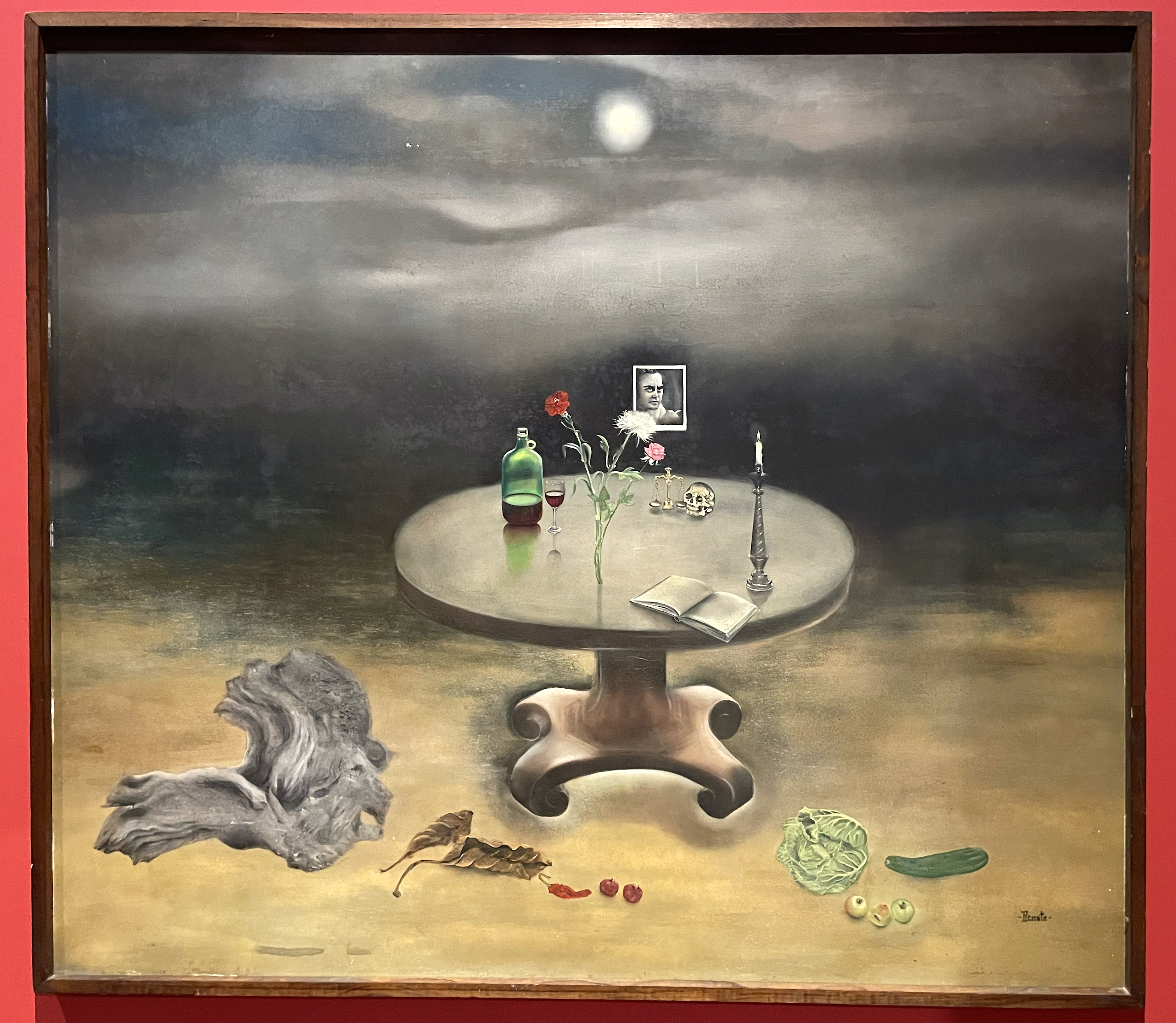LOS ANGELES — Sci-fi, Magick, Queer L.A.: Sexual Science and the Imagi-Nation at the University of California (USC) Fisher Museum of Art, organized with ONE Archives at the USC Libraries, begins by identifying the show’s three areas of focus — science fiction fandom, occult societies, and queer organizing — as seemingly distinct. But all three center on core themes of community, kinship, and creativity — the creativity to imagine social spheres, be they earthly or ethereal, that transcend normalized social roles.
Los Angeles, a city that always has one foot in the world of unreality, or, from another perspective, bespoke realities, is particularly fertile ground for a show that treads into extraterrestrial and supernatural territory. Visually, the show is enthralling. Across the Fisher’s multiple rooms, with walls painted colors to match the mood of the works on view, are paintings, films, books and magazines, records with psychedelic cover art, costumes, and ephemera that collapse the boundaries between art and theater, and theater and life. The latter is what makes the show so conceptually compelling, and so rooted in the soil of LA.
The late artist Cameron’s paintings of commanding nocturnal figures come closest to classical artworks, in the vein of Surrealism, but the formal strangeness here is just a route to a gray area between Hollywood-esque dramatic affect and occult powers summoned in secret spaces. Costumes from the First World Science Fiction Convention in 1939 seem quaint compared to the contemporary cosplay industry, but they also serve as a reminder of one of the exhibition’s key ideas: that within these subcultures, costumes allowed people to be themselves at a time when freedom of expression was policed by both social norms and the law.
It’s no accident that both science fiction and the occult are subcultures related to other worlds, where being begins from a place of transgression. Photographs of nude muscle men by Morris Scott Dollens and, even more so, fantastical illustrations of nude women by Margaret Brundage for the covers of the magazine Weird Tales draw together these connections between alternate worlds and forms of embodiment and queer desire during an era when heteronormativity was a necessary costume in daily life. Artists such as Frederick Bennett Green, whose 1977 lithographs “Gay Pride” and “Cosmic Consciousness” are on display, had connections to Freemasonry, and various items from the wig room at the Los Angeles Scottish Rite Temple are also on view (on loan from the Marciano Foundation, which is located in the building). These items serve as artifacts of sorts that reify the longstanding connections between occult mysteries and queer culture in LA.
To my mind, though, the image that sums it all up is a photograph of Lisa Ben reading Weird Tales in 1945. Ben was a secretary at the RKO Studios production company who was active in LA’s science fiction fandom scene at the time and created the first known lesbian publication in North America, Vice Versa, in 1947. In the photo, a smiling young woman sits in a bikini next to a wall of foliage, bathed in sunlight, at once in this world and her own.









Sci-fi, Magick, Queer L.A.: Sexual Science and the Imagi-Nation continues at the USC Fisher Museum of Art (823 Exposition Boulevard, University Park, Los Angeles) through November 23. The exhibition was curated by Alexis Bard Johnson.

